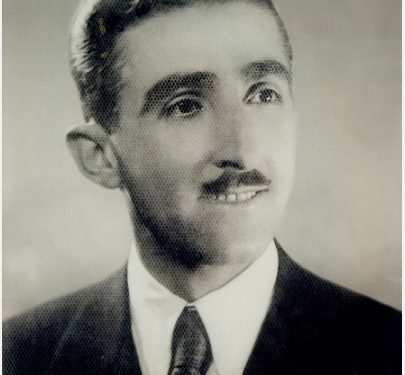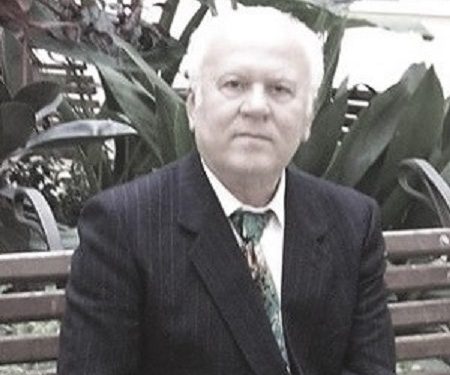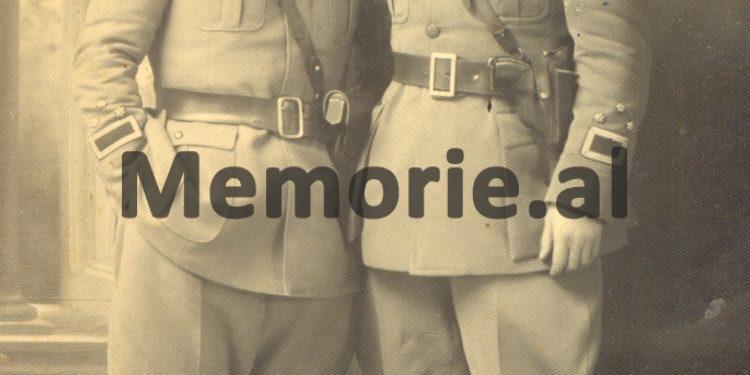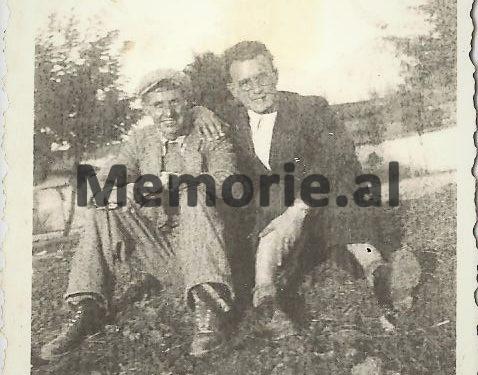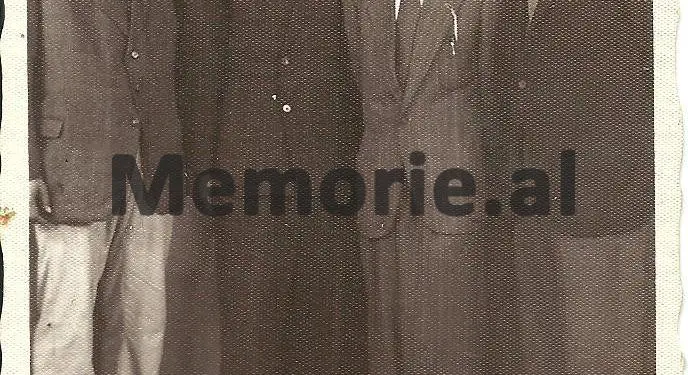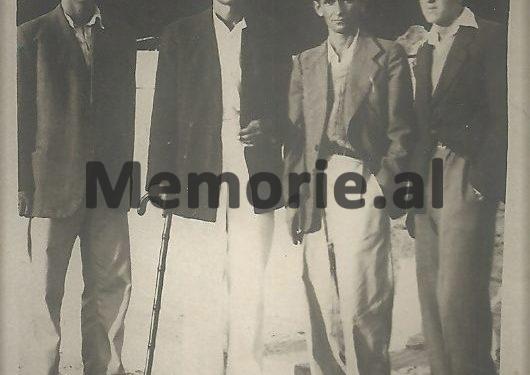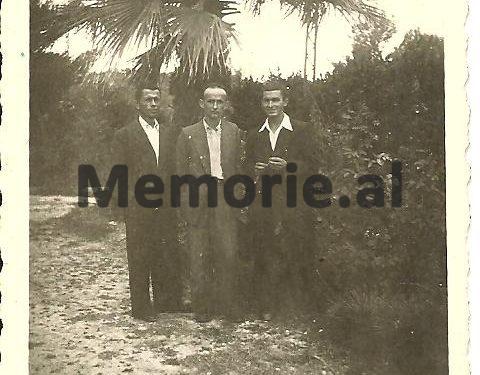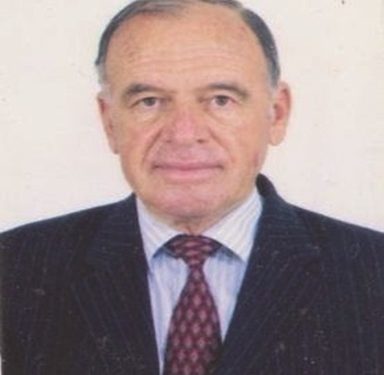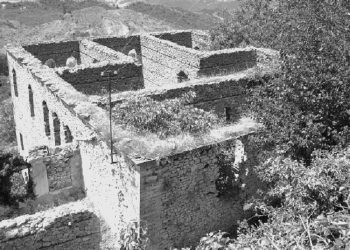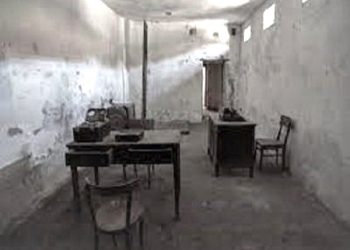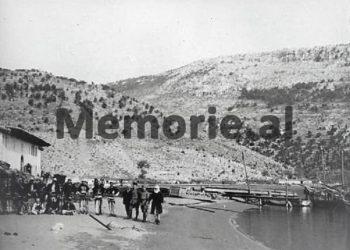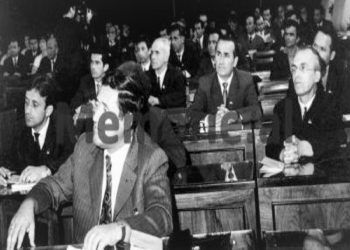By Shpresim KASAJ
Memorie.al/ What caught my attention in the work of the group of political persecuted in Vlora, which prepared the album for the shot, dead in prison, convicted or interned, in short for communist violence and terror in the district of Vlora, was that: whenever the work stalled, Aranit Hoxha was asked and he took out notebooks and notebooks and read the required data.
These notebooks and notebooks, where he had kept information about each convicted or politically persecuted person, he did not keep in his bag, but in his bosom as very precious and beloved relics. I asked him where he had found and received this information and he explained to me that: for them, he needed twenty years of work, moving and asking from village to village and house to house, where he met with the families of the convicts and of political persecuted. He also explained to me that he had not called this work sufficient, as he had verified the data with the state archives.
From Aran Hoxha, I learned that the communists of Vlora had killed, on February 14, 1944, without trial and without any guilt his father, Sulo Hoxha. He also gave me a book written by Mynyr Zyka “An angel of Albania”, dedicated to his father. After reading that book, I noticed that the title matched the content and that Sulo Hoxha had really been an angel of kindness as a priest and teacher, preaching knowledge, love and brotherhood among people, which was contrary to the ideology of communism he preached. class war, and for these, Sulo Hoxha did not like communism.
This was also his only fault, for which the communist clique barbarically killed him, stripping him naked and leaving him in the middle of the forest at the mercy of beasts. Then I understood well why the author kept Aran Hoxha in his bosom, notebooks and notebooks with the data of those killed and political prisoners by the communist regime. His soul had been burned by that regime since childhood. I learned all this when Sula Hoxha told me that he intended to write and publish a book.
Over the past two or three years, he has completed and systematized this data and given it to me to edit. And today, Aranit Hoxha appeared before the readers with his first book: “The woes of communism in the region of Vlora”, of 285 pages.
Its purpose is simple and noble: to bring to light and expose the crimes of the communist system over a period of half a century. Only by bringing to light those crimes, the generations that did not live and do not know that time, will know what cholera and woe was that system and will not allow it to be installed again in Albania. This is the simple message of the book by the author Aran Hoxha.
Such a book was indispensable to the general public. Those who did not live at that time have no way of knowing these crimes, and even we who lived at that time could not know them in detail, as described in this book. How could we know? Who could talk about them, at that time? Of course, we knew he had been shot and convicted and that he had committed genocide, but we could not know his true size.
We learn the thrilling truth from Aran Hoxha’s book. Let’s look at it concretely. In the district of Vlora alone, 434 people have been shot or hanged, to which are added 77 people who died in prisons and the investigator makes 514 human souls, taken unjustly. The number of Vlora martyrs killed by the Nazi occupiers is approximately the same.
But, there is a difference here, the martyrs were killed by the enemy and the people honor them with flowers and wreaths, and these, the martyrs of Aran Hoxha became victims of a fratricidal war, driven by a clique dependent on foreigners, who after killing them, cursed, cursed, anathema them so much that their names could not be uttered.
The number of people killed by the clique and then the communist regime, if we add the number of convicts in communist prisons of 975 people, becomes 1489 people, ie two brigades. Here, we are not mentioning 750 internees. Here, then, were the horrific proportions of the communist genocide in Vlora. What about all of Albania?!
One may not believe these figures mentioned here. It is his right to judge as he pleases, but Aranit Hoxha leaves no room for distrust. He has concretized one by one the figures, with special names and surnames, with the date of birth, arrest and sentence, with place of birth and place of residence, with the years of his sentence and suffering, as well as with the re-sentences when they are repeated… So, it is a great patriotic work that the author has done for twenty years.
He has organized them according to place of birth and residence in 58 villages and three cities: Vlora, Himara and Selenica. There is almost no village in Vlora left without being shot or politically imprisoned. Communist crime began with its birth, as early as 1943, against its own people, communists and partisans who did not think like their Slavic-communist leadership and were called “factionists”.
From August 1943 to November 1944, 22 communists and partisans were killed as “factionists” of Sadik Premta, such as: the commander and commissioner of the ‘Old Vlora Squad’, Neki Imeri and Xhemil Çakërri, the Organizational Secretary of the Vlora District, Mynyr Xhindi and other cadres such as: Fejzo Gjomema, Duro Elmazi, Haki Xhelo, etc.
During the months of October-December 1943, 116 people were assassinated, including the Secretary of the Youth of the National Front for Vlora, Hzis Sharra, etc.
This was just the beginning, and the mass killings and strikes against nationalists and ballists began after the breach of the Mukje Agreement, which took place in the first days of August 1943.
On August 8, when the ink of the joint declaration of this agreement had not yet dried, Enver Hoxha sent an internal memorandum to all the circulars of the Communist Party in the districts, instructing them to tear down the “Call” issued by the Conference of Mukjes and not to talk about it anymore. On the other hand, he condemned the head of the delegation of the National Liberation Front in Mukje, Ymer Dishnica, expelling him from the Central Committee, that he had allegedly fallen under the influence of Balli and that he had shared power with Balli Kombëtar.
At the end of September of that year, Enver Hoxha sent orders to all partisan units to strike with the greatest severity the troops and battalions of the National Front. It was a real fratricidal war, although it is still denied that there was no civil war in Albania. But how can we call differently the war that took the lives of six thousand Albanian nationalists and ballists?!
The Communists did not spare either women or children. Specifically, in Bolena, Peshqeshe Çelomenen and her three sons were killed: Fuat, Gani, Bilbil; Mamudi Novruzaj with her three sons and daughter: Numan, Islam, Bilon and Duzen. In Kuç, eight men and five women were executed, in Hadëraj a mother and her son, Zenepe and Halim Caushi, were killed at the door. And so barbaric killings continue and continue in every village.
A separate farce were the trials against the so-called “war criminals”, which were organized in 1945 by judges and prosecutors who had no knowledge of trial and justice, such as: Qemal Klosi, Islam Hariz Ganaj from Tërbaçi and Mantho Rrapua, as well as the black spirit prosecutor, Selim Alimerko.
On October 25, 1945, this trial panel tried and convicted 80 “war criminals” in one day with a joint indictment, sentencing them to 20 years to life imprisonment and even shooting. Unbelievable, but true that it happened. We have the full document of that trial with the names, charges and sentences given to each of these 80 convicts.
In such trials were tried and convicted the elite of Vlora patriots who had laid the foundation stone of the Albanian state, such as: Qazim Kokoshi, Aristidh Ruci, Zini Abaz Kanina, close associates of Ismail Qemal Vlora, delegates of the Assembly of Vlora in 1912 and signatories of the Declaration of Independence.
Trials and executions by firing squad and hanging by ropes continued even further against the group of deputies and prominent intellectuals who had graduated from universities in the west. Let us mention, for example, the Director of the Maliqi Swamp Drying Site, Avdul Sharra and the engineer Kujtim Beqiri, who had graduated with Gold Medals at the University of Vienna.
What is also worth mentioning is that the author does not talk about the murders and punishments of one side, but also reflects what has been done within the genre. So, he identifies and reflects the former partisans and communists killed, even generals and ministers. The author is also saddened by the fact that these are also Albanians, our brothers of one blood, who became victims of a false and murderous ideology.
In conclusion, we can say that this book is very valuable for covering the crimes of the clique and the communist regime that settled in Albania and that ruled for half a century. This book should not be missing not only in the families of those who have the names of their relatives in it, but also in all others who want to learn the truth and the dimensions of the communist genocide in the district of Vlora, regardless of what political color do they belong to the faith. /Memorie.al




